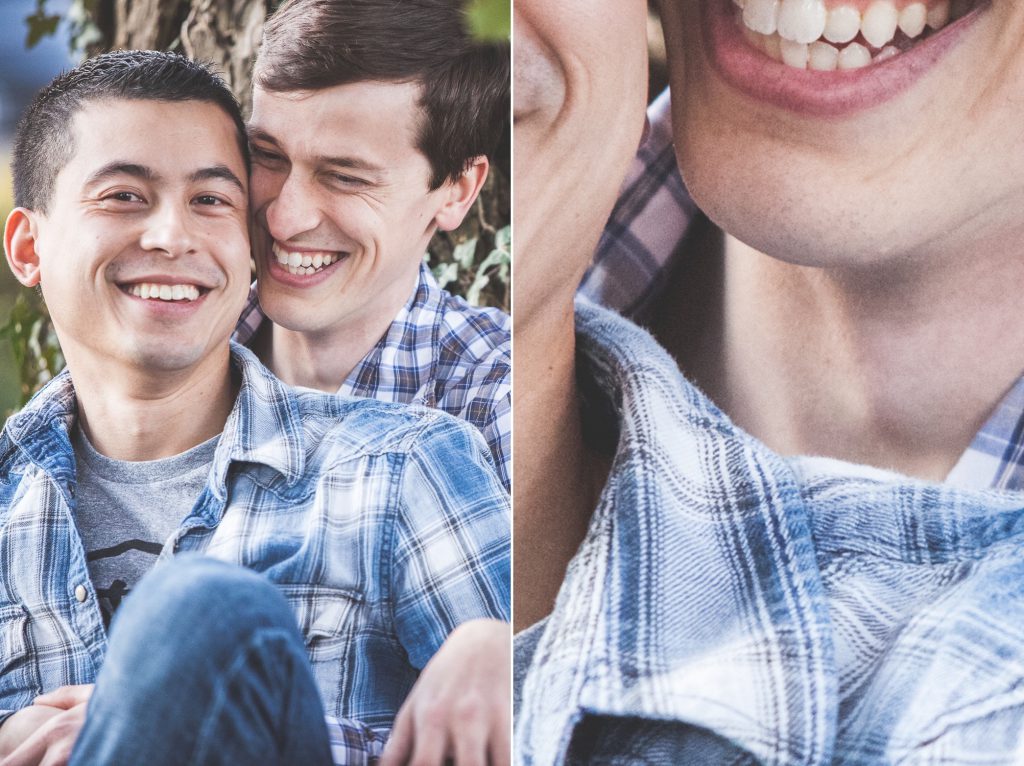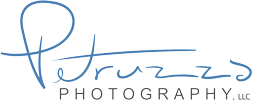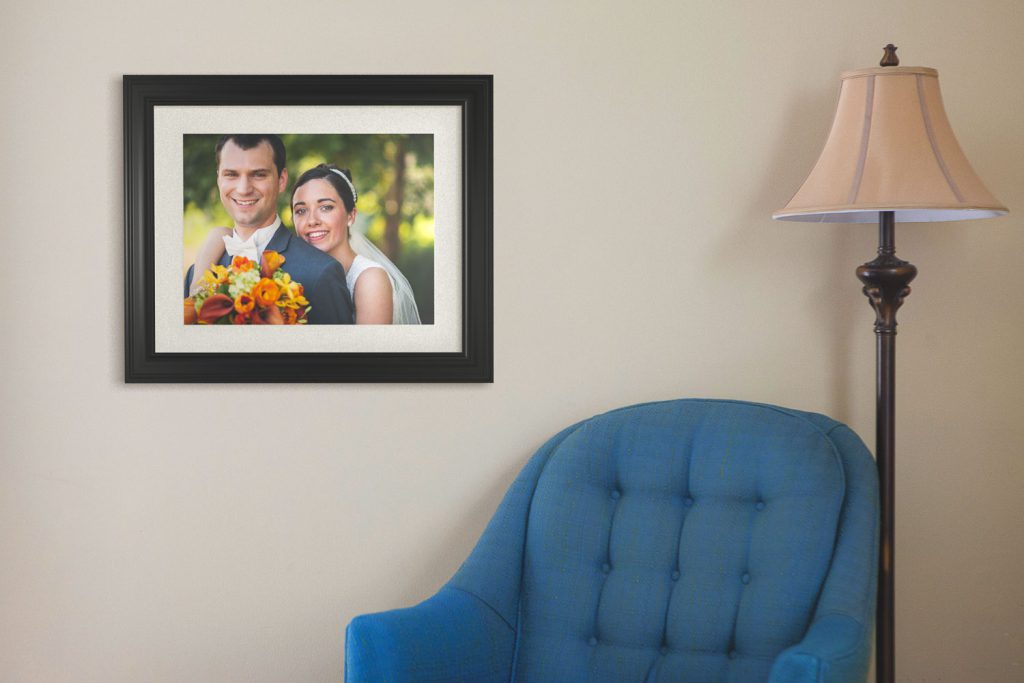So you’ve just received the images from your wedding, or your portrait session. And you got those digital files so you can have the images printed by whoever you like. Good for you! Now, before you go out and use those photos to print an image across the whole side of your house, lets talk a little bit about the limits of printing digital photographs and what can be done about them.
First, lets take a look at an image in its highest resolution. On the left, you can see the whole image. On the right you can see a portion of the image at full scale.

Notice from the image on the left to the image on the right, when the image is seen from a distance, there is no grain. On the right, at full size, you can see a bit of grain, (don’t worry, a bit of grain is not the enemy, pixels are the enemy, more on that in a minute).
If you were to take one of your high resolution photos and have a 5×7” print made of it, it would look more like the image on the left, than the image on the right. Even if you examined really closely, the grain you see on the right would hardly be noticeable. It would look perfect, because it’s well below the technical sizing limit of about 11×14″.
Lets go bigger though. Lets say you wanted a much larger image, so you went ahead and had that 11×14” print made. Upon close inspection, it will look much more like the image on the right, than the image on the left. If you went up close to the print and looked carefully, you will be able to clearly see the grain in the image. Again, this isn’t a bad thing, grain artifacts give large prints a nice touch.
But, lets take it a step further and say you wanted to print it really big. Say you wanted a 60×40” print. If you walked up to that print and got within a few feet to examine it closely, this is what it will look like:

Not so great, right? What you are seeing here are the pixels. The tiny individual squares of color that come together like a mosaic to make a complete picture. When there are enough of them, they become invisible, but when there are not enough, they stand out like a sore thumb. For the two images above, there are not enough pixels to clearly describe what you’re seeing is actually a person’s chin. It’s just a bunch of little squares.
The image files you receive from us will be 300ppi (pixels per inch) and about 15,000,000 pixels in total (or, 15 megapixels). Now, I’m simplifying here, but what this means is that for every “real world” inch you print, there will be 300 pixels printed. The larger you print your image, beyond about 11×14”, the lower the pixels per inch will be and the more clearly you will see those pixels.
So what do you do if you want to print the photo larger? If you want to print an image larger than about 11×14”, the image file ought to be specially prepared by a professional. That will mean ‘artificially’ resizing the file and cleaning it of artifacts that would look unappealing at that size. An image that is treated for larger printing will often look very good, but as the print gets larger, it will also gradually get more blurry. There is little that can be done about this, though we will do everything we can to give you the best results.
Here is a comparison of an image treated for large scale printing, and one that is untreated. You can see that the pixelation which would normally cause problems when printed very large is almost completely gone. It may still look a little bit fuzzy when you look closely, but those evil pixels are now invisible.

If you know before your session that one or more of your images will need to be printed very, very large, talk to your photographer about that. We can use special techniques and equipment during shooting which will improve the quality of very large prints. If you have already received your images and would like to print one of them in a very large format, get in touch with us.
Happy printing everyone! :)

